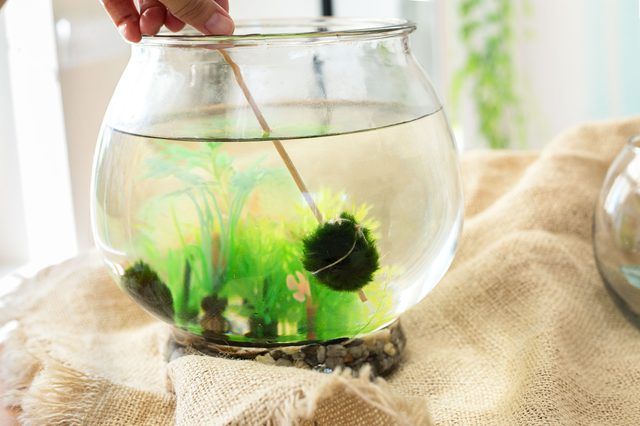Bulbs
Flower Basics
Flower Beds & Specialty Gardens
Flower Garden
Garden Furniture
Garden Gnomes
Garden Seeds
Garden Sheds
Garden Statues
Garden Tools & Supplies
Gardening Basics
Green & Organic
Groundcovers & Vines
Growing Annuals
Growing Basil
Growing Beans
Growing Berries
Growing Blueberries
Growing Cactus
Growing Corn
Growing Cotton
Growing Edibles
Growing Flowers
Growing Garlic
Growing Grapes
Growing Grass
Growing Herbs
Growing Jasmine
Growing Mint
Growing Mushrooms
Orchids
Growing Peanuts
Growing Perennials
Growing Plants
Growing Rosemary
Growing Roses
Growing Strawberries
Growing Sunflowers
Growing Thyme
Growing Tomatoes
Growing Tulips
Growing Vegetables
Herb Basics
Herb Garden
Indoor Growing
Landscaping Basics
Landscaping Patios
Landscaping Plants
Landscaping Shrubs
Landscaping Trees
Landscaping Walks & Pathways
Lawn Basics
Lawn Maintenance
Lawn Mowers
Lawn Ornaments
Lawn Planting
Lawn Tools
Outdoor Growing
Overall Landscape Planning
Pests, Weeds & Problems
Plant Basics
Rock Garden
Rose Garden
Shrubs
Soil
Specialty Gardens
Trees
Vegetable Garden
Yard Maintenance
How to Propagate Moss Balls
How to Propagate Moss Balls. Moss balls (Cladophora aegagropila) create otherworldly aquarium aquascapes, creating big puffs of green in fresh water. When you first add one of these unassuming aquatic plants to water, it expands from a partly dehydrated state to twice its size. These lush Japanese plants also known as "lake balls" or...
Moss balls (Cladophora aegagropila) create otherworldly aquarium aquascapes, creating big puffs of green in fresh water. When you first add one of these unassuming aquatic plants to water, it expands from a partly dehydrated state to twice its size. These lush Japanese plants also known as "lake balls" or "marimo balls," propagate by division. This plant is so treasured in the region near Lake Akan in Japan, that the Ainu people have held festivals to preserve it since 1950. Lake Akan is one of the few places in the world where these moss balls grow naturally, but they can be propagated for your aquarium.
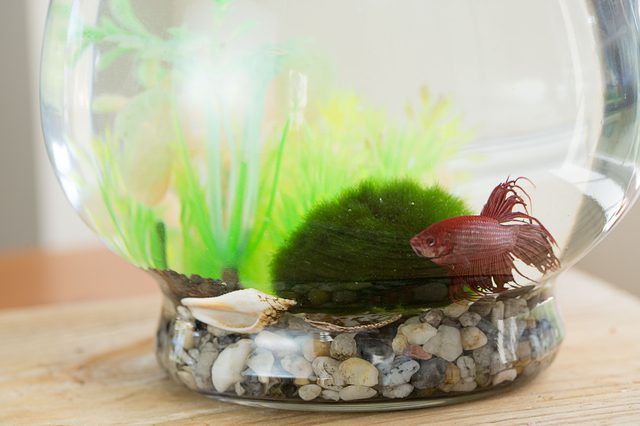
Things You'll Need
Clippers
Thread
Step 1
Remove the moss ball from the aquarium or other container. Gently squeeze excess water out of the moss ball.

Step 2
Cut the moss ball in half. Cut each half of the moss ball in half. If the resulting pieces are larger than 2 to 3 inches, cut them each in half. This gives you four to eight new moss balls. Moss balls don't have a kernel or central structure, so it's fine to cut it through the center and in any direction.
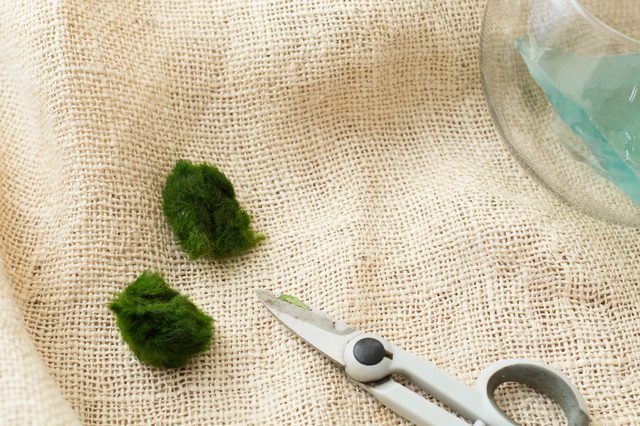
Step 3
Tie thread around each moss-ball cutting in two directions. Wrap the thread around the moss, twist it and wrap it in the opposite direction, the way you'd wrap ribbon in both directions on a gift box. Knot the thread and cut off the excess.
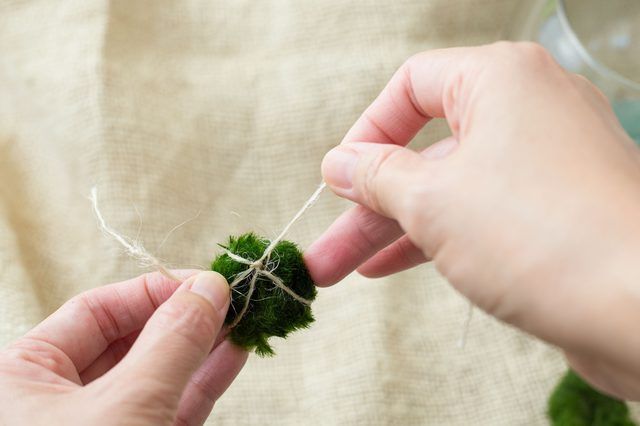
Step 4
Put the moss ball cuttings in your aquarium or other fresh-water aquatic plant environment. Moss balls prefer low light outdoors or moderate light in an aquarium, with water temperatures of 59 to 86 degrees Fahrenheit.
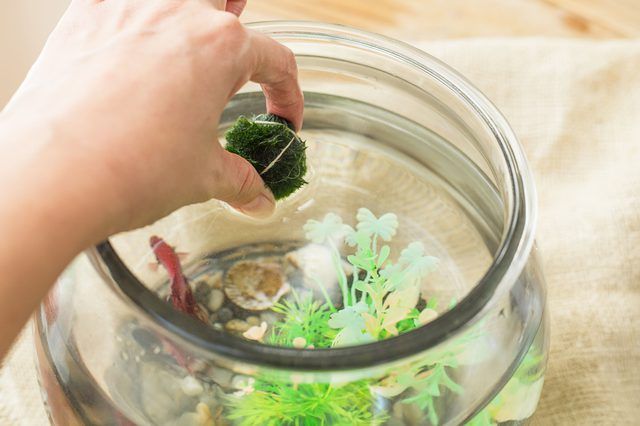
Step 5
Turn the moss balls at least once a week to encourage growth on all sides of the moss balls. If a marimo moss ball sits in one spot the side that doesn't get any light will die. They also won't become round if they aren't turned regularly because they need light on all sides to grow round.
